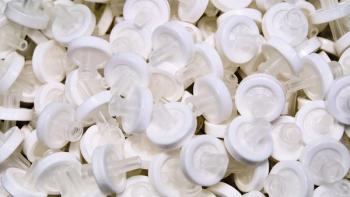
- BioPharm International-09-01-2013
- Volume 26
- Issue 9
Trends in Downstream Bioprocessing
While the severity of capacity problems related to downstream processing appears to have eased, it continues to be a problem and chromatography columns are the most frequent culprits.
Downstream processing involves the recovery and purification of protein therapeutics for biopharmaceuticals, vaccines, and other biologics. It involves the removal of insoluble cell debris and particulates; product isolation through extraction, adsorption, ultrafiltration, or precipitation; product purification through affinity chromatography, crystallization, or precipitation; and product polishing and virus removal.
Downstream processing (DSP) has seen significant challenges over the past few years. Improved upstream bioprocessing has created increasingly higher product titres and resulted in purification bottle necks. In addition, the recent increase in upstream single-use technologies has created pressures on DSP operations to keep up.
DSP remains one of the most crucial and talked-about areas of biopharmaceutical manufacturing. Indeed, a survey conducted in late 2012 among 450 global subject matter experts and senior participants who make up BioPlan’s Biotechnology Industry Council confirmed that a leading 24% of bioprocessing decision-makers indicated that downstream processing would be the biggest trend in 2013 (1).
Although much of the discussion surrounding downstream purification concerns resolving or avoid short-term capacity constraints, the long-term implications to the industry are more crucial and significant in terms of improving overall bioprocessing, increasing the number of world-class bioprocessing facilities, and lowering overall costs of bioprocessing. This more strategic view is recognized by both end-users and suppliers and technology innovators. And in BioPlan’s recently released 10th Annual Report and Survey of Biopharmaceutical Manufacturing (2), it is found that DSP is one of the top areas in which both industry suppliers and end-users are developing and evaluating new technologies and other options for improving their downstream processes.
Many of the same challenges that have plagued the industry over the past few years continue:
• Cost of chromatography materials
• Lack of single-use (disposable) options
• Cost of membranes
• Cleaning and validation costs
• Time for operations.
In addition, while many firms would like to avoid the high cost of Protein A affinity resin, most find it difficult to make such changes to their processes, and their reluctance is compounded by the fact that there remain few feasible alternatives that have been clearly proven at a large scale.
Downstream’s Impact on Overall Capacity
DSP clearly has strategic manufacturing implications. Data from BioPlan’s Annual Report indicates that about three in four facilities are experiencing or expecting at least minor capacity bottlenecks as a result of downstream processes (2). The good news is that the severity of the constraints appears to be leveling off. Specifically, 6.8% (vs. 8.5% last year) of respondents agreed that their facility was experiencing “Serious bottlenecks today,” and a lower proportion, 29.7% (37.8% last year), reported that they were experiencing “Some bottleneck problems.” Therefore, indications of more serious bottlenecks appear to be on the decline (see Figure 1). This is consistent with BioPlan’s research indicating implementation of specific, incremental improvements in downstream unit operations.
Anecdotal responses to the survey align with the data. This year, relatively few respondents commented on the negative impact of downstream steps. Representative comments included:
• Bottleneck at Protein-A chromatography
• Bottlenecks could occur in the next five years
• Clarification before column purification is a bottleneck problem
• New processes being introduced could create downstream-related delays at process development stage.
By contrast, prior year comments included more detail and more indication of problems:
• Downstream still is not keeping up with increasing titers.
• Expression systems are producing 5 times what they were 10 years ago.
• Current downstream/purification areas were not designed to handle this increase in production.
• Buffer capacity, column size, UF membrane area are all problems.
• Primary clarification is a major bottleneck.
• We need multiple trains.
• We need better affinity columns (protein A).
• The problem is buffer capacity and need for in-line dilution.
Which Purification Steps Are the Main Culprits?
Not all purification steps are created equal, so to speak. And this year, as with prior years, the BioPlan survey showed some steps are more likely to contribute to “severe constraints” than others.
Chromatography columns remain at the top of the list of problems, with 43.4% (32.5% last year, 44.1% in 2011) indicating at least “moderate constraints,” and 83.2% (69.5% last year, 76.3% in 2011) indicating at least “minor constraints.” The vast majority of the complaints are considered “moderate” or “minor” in nature, although 16% this year reported “significant” (14.2%) or “severe” (2.8%) constraints due to chromatography. These persistent capacity issues could be related to a reluctance on the part of product developers to modify legacy processes, with these developers harboring regulatory concerns that hold them back from using newer solutions or process scale-up.
Chromatography column issues are showing a trend for decreasing “significant” or “severe” constraints. Depth filtration areas, by contrast, after hitting a low of 7.2% reporting “significant” or “severe” constraints, appear to have risen again, to 12% of respondents this year. Similarly, problems of that magnitude have gradually increased from 4.4% in 2010 to 8% this year for ultrafiltration steps.
Taken together, the data indicate that while chromatography columns were blamed for far more “severe” or “significant” constraints than depth filtration and ultrafiltration steps as recently as 2011, the gap has narrowed appreciably since then. There are also some interesting regional dynamics at play in the results. In terms of “significant” or “severe” constraints:
• US respondents reported fewer constraints vs. European respondents concerning depth filtration (10.0% vs. 15.4% for Europe). The gap narrowed from a 10-point spread in 2010.
• US respondents reported significantly fewer concerns vs. European respondents concerning ultrafiltration (3.2% vs. 15.4% for Europe).
• European respondents reported slightly less concerns vs. US respondents concerning chromatography (17.7% for U.S. vs. 14.8% for Europe). In 2009, 33.3% of Western Europeans vs. 14.5% of U.S. respondents reported the same level of concern regarding chromatography (an 18.8 point gap).
What are Facilities Doing to Improve Downstream Processing?
Although facilities generally operate with fixed capability, the need to keep pace with the upstream process and respond to product masses beyond the design basis of the facility has fueled the development of potential solutions. These include, among many other new technology approaches identified in the study, the development of:
• Higher capacity resins
• Use of inline buffer dilution
• Use of inline conditioning of process intermediates
• Simple scale-up and/or cycling of chromatography steps.
Maximizing plant capacity is also related to minimizing the time between steps, or between products and the introduction of disposable options for multiple unit operations. BioPlan’s data suggest that, in spite of continued increases in upstream product mass, use of these approaches have stemmed, or reversed the tide.
It’s also worth noting that the survey data are representative somewhat of perceptions of bottlenecks rather than actual bottlenecks. As titers have increased, new technology and the realization that most drugs will not require metric tons of product have reduced the perception of a downstream bottleneck.
So what activities have the industry been undertaking to address bottlenecks, whether real or only perceived? Survey respondents were asked about the specific technologies and actions their facility has actually implemented to improve their downstream purification operations. A sub-set of the 19 different activities implemented by respondents include the following that were noted by at least 40% of respondents (see Figure 2):
• Optimizing of running conditions, indicated by 55.6% (up from 43.4% last year)
• Used or evaluated membrane-based filtration technology (46%)
• Developed downstream process with fewer steps (46%)
• Used or evaluated ion-exchange technologies (46%)
• Cycle columns more frequently (41.3%)
• Reducing number of process steps (39.7%).
This year only 4.9% of respondents reported having switched to alternatives to Protein A, despite 23.8% saying elsewhere in the study that they are investigating alternatives. At present, most industry decision-makers find current Protein A, particularly, in the US and EU (versus the rest of the world), to be an adequate, if expensive, solution for antibody capture. Alternatives that reduce cost and improve performance and capacity relative to these resins have not emerged.
Notably, CMOs reported higher levels of adoption for nearly every implementation factor. With CMO profits dependent on their efficiency and dealing with many more products and with clients paying the costs for CMO implementation of new technologies, CMOs apparently implement novel downstream technologies ahead of developers.
Looking Forward
While the severity of capacity problems related to downstream processing appears to have eased this year, there is no doubt that this continues to be a problem in the industry. As the BioPlan study shows, chromatography columns are the most frequent culprits. And facilities, while showing some interest in alternatives to protein A, have not yet found the right alternatives.
As one respondent to BioPlan’s expert panel noted: “The industry would greatly benefit from technical improvements and new products that enable purification and other downstream processing steps at a higher concentration of target protein, with a higher capacity for chromatography, or with higher concentration in the final vial. So the issue is, what can we do to increase the concentration of protein in solution without decreasing yields or activity?”
On-going research into new technologies being developed in this industry has identified many downstream processing devices and single-use technologies that will improve productivity. These innovative technologies are likely to support more single-use applications, and greater adoption of continuous bioprocessing. Future developments are likely to result in more efficient bioprocessing that meet the needs of production in emerging regions, and permit cost-effective biosimilar manufacturing, as well as reduced overall bioprocessing costs at GMP level quality.
References
1. BioPlan Associates, “2013 Biotechnology Industry Council Trends Analysis Study” (January 2013).
2. BioPlan Associates, 10th Annual Report and Survey of Biopharmaceutical Manufacturing Capacity and Production (Rockville, MD, April 2013), www.bioplanassociates.com/10th.
About the Author
Eric S. Langer is president and managing partner at BioPlan Associates, Inc., elanger@bioplanassociates.com, tel. 301.921.5979,
Articles in this issue
over 12 years ago
Identification and Quantification of Trace-Level Protein Impuritiesover 12 years ago
Report from Brazilover 12 years ago
Regulatory Roundupover 12 years ago
Gauging the Outlook of the Biologics Marketover 12 years ago
The Elements of Trainingover 12 years ago
Prefilter Features PES Nanofleece Materialover 12 years ago
Ion Exchange Chromatography Resins for High-Resolution Purificationover 12 years ago
EU Raises API Standards: A Curse in Disguise?over 12 years ago
Best Practices for Restricted Access Barrier Systemsover 12 years ago
Outsourcing Partnerships for CMC DevelopmentNewsletter
Stay at the forefront of biopharmaceutical innovation—subscribe to BioPharm International for expert insights on drug development, manufacturing, compliance, and more.




